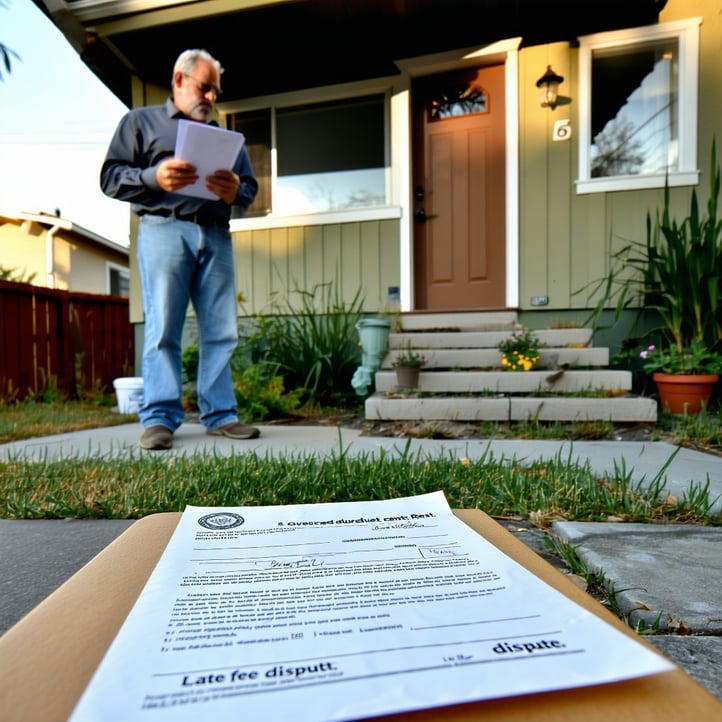In California, even what seems like a minor maintenance issue can lead to major legal consequences. One Oceanside landlord found this out the hard way when they delayed repairing a broken bathroom fan. The result? A lawsuit that cost $8,000. No flood. No visible mold. Just repeated complaints and poor ventilation. Here's what happened and what every landlord needs to know about California's habitability laws to avoid similar outcomes.
The Case of the Broken Fan
The property was a standard Oceanside condo. When the tenant first reported the broken bathroom fan, the landlord didn’t act right away. The bathroom looked clean, and there was no visible mold. But over time, the lack of ventilation allowed moisture to accumulate. After six months, a small patch of mold appeared. Still, no repairs were made.
Later, a rent dispute escalated into legal action. The tenant withheld rent, citing uninhabitable living conditions. The judge cited California Civil Code §1941.1 and Health & Safety Code §17920.3, both of which lay out requirements for what constitutes a habitable home.
The result? The tenant was awarded:
- Rent reduction
- Reimbursement for cleaning costs
- Emotional distress damages
- Attorney’s fees
Total cost to the landlord: $8,000.
What Is the Warranty of Habitability?
Under California law, landlords must provide and maintain rental properties in a habitable condition. This obligation, called the "warranty of habitability," applies regardless of what the lease says. Tenants can’t waive this right, even if they agree to rent a unit "as is."
The habitability standard was first recognized in Green v. Superior Court (1974) and has since been codified in California law. It applies to both the rental unit and all common areas.
Key Habitability Requirements:
- Working heat, plumbing, and electrical systems
- Adequate weatherproofing and no broken windows
- Sanitary conditions (no infestations, mold, or debris)
- Secure doors and windows with proper locks
- Hot and cold running water
Even small issues, like torn carpet or old appliances, can become habitability problems if they create safety hazards.
Landlord Obligations and Timelines
Landlords must respond to repair requests within a "reasonable" time. For nonurgent issues, this typically means 30 days. But for health or safety related problems—such as broken heating, water leaks, or inoperable ventilation—repairs should be made within days or even hours.
Failure to act quickly may be interpreted as a breach of the warranty of habitability, especially if the issue worsens over time or leads to other problems, like mold.
Consequences of Noncompliance
If a landlord breaches the habitability warranty, tenants have several legal remedies:
- Withholding Rent: A tenant may stop paying rent until repairs are made.
- Repair and Deduct: Tenants can make the repairs themselves and deduct the cost from their rent (up to 1 month’s rent, no more than twice a year).
- Lawsuits: Tenants can sue for damages including rent reduction, reimbursement, emotional distress, and legal fees.
- Retaliation Claims: Landlords who try to evict or raise rent shortly after a habitability complaint can face claims of retaliatory eviction.
Additionally, local code enforcement may get involved and issue citations. In severe cases, landlords can be fined or even required to pay tenant relocation assistance.
Common Habitability Violations
According to Civil Code §1941.1 and Health & Safety Code §17920.3, the following conditions may make a unit legally uninhabitable:
- Broken or missing bathroom ventilation
- No heat or hot water
- Leaking plumbing or roof
- Damaged or missing locks
- Mold growth or excessive moisture
- Electrical hazards
- Infestation of vermin or insects
Importantly, even issues that seem cosmetic (like torn carpet) can be cited if they create a trip hazard or health risk.
The Importance of Timely Repairs
In the Oceanside case, the landlord likely thought a broken fan was not urgent. But ventilation is specifically referenced under Health & Safety Code §17920.3. Once the tenant reported the issue, the clock started ticking. The longer the delay, the more liability the landlord faced.
Had the landlord responded quickly, the total cost would likely have been under $200 for a fan replacement. Instead, they faced:
- Legal proceedings
- Damages
- Negative record in court
Can Tenants Be at Fault?
Landlords aren’t responsible for habitability issues caused directly by the tenant. For example, if a tenant breaks a window or causes a pest infestation through neglect, they may bear the liability. However, proving tenant fault can be difficult. And if the condition spreads or affects other units, the landlord may still be held responsible for remediation.
In almost all cases, it’s safer and more cost effective for landlords to fix the issue promptly and sort out responsibility later.
Best Practices for Landlords
To avoid habitability disputes, implement the following:
- Standardized Maintenance Process: Use software or systems to track all repair requests.
- Prompt Responses: Prioritize health and safety related repairs.
- Written Records: Document all tenant requests, responses, and completed work.
- Tenant Signoffs: Have tenants confirm when repairs are completed satisfactorily.
- Regular Inspections: Proactively check for issues that could become habitability problems.
When to Seek Help
Managing your own property can be time consuming and risky if you're not staying up to date with state and local requirements. A property management company like Raintree Property Management can ensure:
- Timely repairs
- Legal compliance
- Reduced risk of lawsuits
We’ve never had a client sued over habitability issues. Why? Because we treat repairs as urgent and nonnegotiable.
Conclusion
California’s habitability laws are strict and enforceable. Even something as small as a broken bathroom fan can escalate into a costly lawsuit if ignored. Don’t take that chance.
If you’re managing a rental property in North County San Diego, Raintree Property Management can help you avoid costly mistakes. We manage properties in Carlsbad, Oceanside, Vista, Encinitas and San Marcos. Contact us to learn more about how we can protect your investment and keep your tenants safe.




